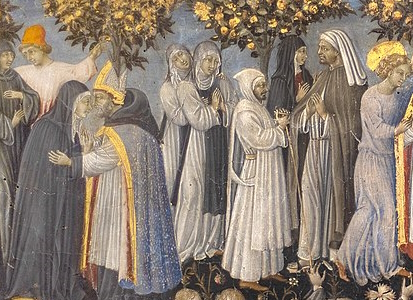Scrolling through TikTok, Instagram, YouTube… it feels like influencers are everywhere, a thoroughly modern invention, right? But what if I told you the original influencers weren’t crafting viral videos, but commanding royal courts, dazzling high society, and shaping empires centuries ago? And the recent Met Gala? It gave us a perfect glimpse into one fascinating branch of this long history …
How Latin America Shaped Germ Theory (But History Overlooked It)
Imagine this: It’s 1910, and you’re strolling through an international medical conference in Europe. The legacies of Louis Pasteur and Robert Koch are being celebrated for discovering that tiny microbes—not “bad air”—cause diseases. Revolutionary! Groundbreaking! The audience applauds these European geniuses who saved humanity! And then, from the back of the room, a Brazilian doctor stands up: “Excuse me, but …
Ephelia: Unmasking a Seventeenth-Century Feminist Voice
Do you love women writers who write with humour and irony? Who criticise their society in a satirical, tongue-in-cheek way? Do you like a good literary mystery? Let me introduce you to the elusive Ephelia – yes, that’s Ephelia with an ‘E’, not Hamlet’s Ophelia with an ‘O’. Ephelia was a 17th-century poet & playwright whose identity has puzzled historians and …
Alchemy in the Renaissance: The Mysterious Isabella Cortese
How do you become an alchemist? This is what a 16th-century book suggests: This advice is said to come from a woman; it’s from The Secrets of the Lady Isabella Cortese, published in Venice in 1561. But what does this book, and the mysterious writer to whom it is attributed, tell us about women, science, alchemy, authorship, authority and expertise …
Caterina Sforza: The Alchemy and Power of a Renaissance Icon
Imagine you are the ruler of an Italian city in the Renaissance; your husband has been murdered and your children were taken hostage by your political enemies, who hope to take control of your fortress. Yet the people inside are still loyal to you and are not surrendering. So, leaving your children with your enemies, you go inside the castle, …
5 More Brazilian Women Who Changed History
Have you ever heard of Anita Garibaldi, the Brazilian revolutionary fighter called the ‘heroine of two worlds’; or Clarice Lispector, the modernist author who was born in Ukraine and raised in Brazil, and who wrote some of the most haunting novels you will ever read…? Well, after the fantastic response to my first text about remarkable Brazilian women, I couldn’t …
5 Brazilian Women Who Changed History
Have you ever heard of Dandara, the Afro-Brazilian warrior who was a leader in the fight against slavery? Or of Maria Quitéria, the ‘Brazilian Joan of Arc’? If you haven’t, you’re not alone. Like her, so many incredible women in Brazilian history have been erased from the historical narrative for centuries, whether they were soldiers, artists, or writers. Luckily, that …
Paracelsus: The Rebellious Doctor Who Defied Tradition
I recently found myself going down the rabbit hole of Japanese manga and anime fandom online. Now, this is something I know nothing about. I’ve never really been into anime or manga, but I was fascinated to learn about Van Hohenheim or ‘Hohenheim of Light’, a character who is a powerful alchemist in the anime series Fullmetal Alchemist, clearly inspired …
Veiled Truths: Scandal and Mystery in a Renaissance Convent
Can being possessed by the devil ever be a good thing…? Well, for a 17th-century Italian nun who claimed to have seen Jesus Christ, plus literally marrying him, it kind of was. Plus it helped with all the accusations of her having sex… with another nun. Let me tell you a story. The story of Sister Benedetta Carlini, sometimes described …
Fioravanti: Pioneering Surgeon-Alchemist of the Renaissance
Leonardo Fioravanti was called a Charlatan, a Poisoner, a Reformer, a Knight, a Prophet, a Miracle-Worker, a Saviour, an Alchemist, and a Fraud.
- Page 1 of 2
- 1
- 2











